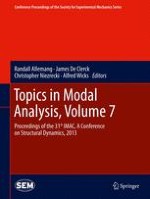Topics in Modal Analysis, Volume 7: Proceedings of the 31st IMAC, A Conference and Exposition on Structural Dynamics, 2013, the seventh volume of seven from the Conference, brings together contributions to this important area of research and engineering. The collection presents early findings and case studies on fundamental and applied aspects of Structural Dynamics, including papers on:
Fluid Structure Interaction
Adaptive Structures
Experimental Techniques
Analytical Methods
Damage Detection
Damping of Materials & Members
Modal Parameter Identification
Modal Testing Methods
System Identification
Active Control
Modal Parameter Estimation
Processing Modal Data
